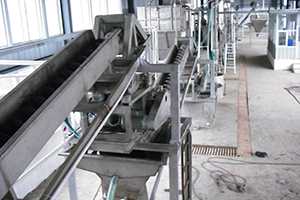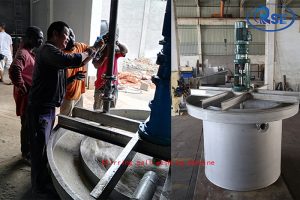Salt washing is a chemical process that has been employed in various industries for decades, known for its efficacy in the purification, refining, and separation of substances. The process utilizes the properties of salt to remove impurities from various substances, making it a valuable technique in areas such as textile production, food processing, cosmetics, pharmaceuticals, and even environmental management. This article delves into the principles behind salt washing, its applications, and how the process works at a molecular level.
It is primarily based on the solubility principles of different compounds in water. In essence, the process involves the addition of a salt, usually sodium chloride (table salt), to a mixture to induce the separation of impurities from the target substance. The salt can either dissolve in the solution, altering the solubility of various components, or it can act as a precipitant, causing impurities to coagulate and separate out of the solution.
The basic principle at work is the ability of salt to affect the solubility of other substances in water. When salt is added to a solution, it dissociates into its constituent ions. These ions interact with the molecules of other solutes in the solution, often leading to changes in the solubility of these solutes. For instance, certain impurities may become less soluble and precipitate out of the solution, while the desired substance remains dissolved.

To understand how it works, it is crucial to consider the concepts of solubility and ionic interactions.
It is utilized across a wide range of industries due to its effectiveness in purifying and refining substances. Below are some key applications:
In the textile industry, it is employed to remove impurities and improve the texture of fabrics. During the dyeing process, for instance, salt is added to the dye bath to control the absorption of dye by the fabric. The salt helps in removing excess dye and impurities, leading to a more uniform and vibrant color. Additionally, salt washing can be used in the finishing process to give fabrics a softer hand feel by removing unwanted residues.
In food processing, it is used for various purposes, such as purifying raw materials, preserving food, and improving the quality of products. One common application is in the production of butter, where they help remove excess moisture and milk solids, resulting in a purer product with a longer shelf life. Similarly, in cheese-making, it is used to control the moisture content and enhance flavor development.
The cosmetics industry also benefits from salt washing, particularly in the production of soaps, shampoos, and other personal care products. They can be used to remove impurities from raw materials, ensuring the final product is of high quality. For instance, in soap-making, they help remove glycerin and other impurities, resulting in a harder and longer-lasting soap.
In the pharmaceutical industry, it is used in the purification of active pharmaceutical ingredients (APIs). During drug manufacturing, it is crucial to ensure that the final product is free of impurities that could affect its efficacy or safety. It is employed to purify APIs by removing unwanted by-products and contaminants. This process is particularly important in the production of injectable drugs, where even trace amounts of impurities can be harmful.
They also find applications in environmental management, particularly in the treatment of wastewater and industrial effluents. By adding salt to contaminated water, certain pollutants can be precipitated out, making them easier to remove. This method is especially useful in the removal of heavy metals and other toxic substances from wastewater, helping to reduce environmental pollution.

The process can be broken down into several key steps, depending on the specific application. Below is a general overview of how salt washing works:
The first step in salt washing is to prepare the solution containing the substance to be purified. This solution is typically an aqueous mixture, although other solvents can be used depending on the nature of the substance. The concentration of the solution is adjusted based on the desired outcome, such as the removal of specific impurities or the separation of different components.
Once the solution is prepared, salt is gradually added to the mixture. The choice of salt depends on the specific application and the nature of the impurities to be removed. Common salts used in salt washing include sodium chloride (NaCl), potassium chloride (KCl), and ammonium sulfate ((NH4)2SO4).
After the salt is added, the solution is thoroughly mixed to ensure that the salt dissolves completely and interacts with the other components in the mixture. During this mixing process, the salt ions dissociate and interact with the molecules in the solution, leading to changes in solubility. Impurities that become less soluble in the presence of salt will start to precipitate out of the solution.
Once the impurities have precipitated out of the solution, they are separated from the liquid phase. This can be done through filtration, centrifugation, or decantation, depending on the specific application. The goal is to remove as much of the precipitated impurities as possible, leaving behind a purified solution.
In some cases, the precipitated impurities may need to be washed to remove any residual salt or other contaminants. This is done by rinsing the precipitate with a small amount of solvent, usually water, and then drying it to remove any remaining moisture. The purified substance can then be collected for further processing or use.
Like any chemical process, salt washing has its advantages and limitations. Understanding these can help determine whether it is the right technique for a given application.
Salt washing is a valuable and versatile chemical process used across various industries for the purification and refinement of substances. By leveraging the principles of solubility and ionic interactions, they effectively remove impurities, leading to higher quality and more consistent products. While the process has its limitations, its simplicity, cost-effectiveness, and broad applicability make it an essential tool in fields ranging from textiles and food processing to pharmaceuticals and environmental management. Understanding the underlying chemistry and the specific requirements of each application is key to successfully implementing salt washing and achieving the desired results.
Copyright © 2025 Wuxi Rising Machinery Co., Ltd. All Rights Reserved.